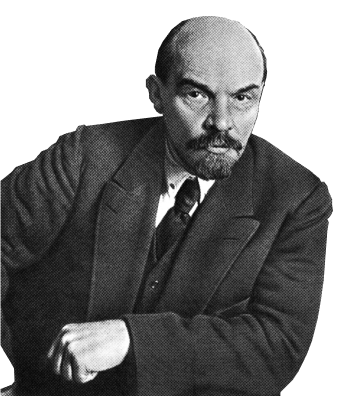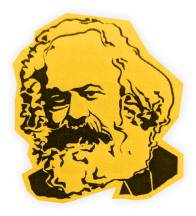In 1922, homosexuality was legalised in revolutionary Soviet Russia, making it one of the most advanced countries in the world on this question. While Britain or the United States were still incarcerating homosexuals, gay men could live openly with their partners in Russia. England did not legalise homosexuality until 1967, with certain limitations, and full legalisation of homosexuality did not come about until 2000! In the United States, before 1962, homosexuality was considered a crime in every state, punishable with imprisonment; in Idaho one even risked a life sentence.
Illinois was the first state to decriminalise consensual acts of same-sex love in 1962, but it was only in 2003 that, finally, homosexuality was no longer considered a crime across the whole of the USA. Spain decriminalized homosexuality in 1979, after the fall of the Franco regime; Canada did so in 1969, as did West Germany, Austria in 1971, Finland in 1971, Norway in 1972, and Ireland in 1993.
I am writing a longer series of articles on the decriminalisation of homosexuality in Russia after the October revolution, how homosexuality was subsequently viewed, how the bureaucratic degeneration of the Russian revolution also slowly suffocated the freedoms won by homosexuals, and finally the build up to re-criminalisation in 1934. I will not, therefore deal with these questions in detail here.
In the 1930s, after the criminalisation of homosexuality in the Soviet Union, the Stalinist Communist International became permeated with homophobia and in almost all those countries where Stalinist regimes came to power, homosexuality was criminalised, from Eastern Europe, to China, to Cuba. This only began to change under the pressure of the growing gay rights movement, especially on the back of the 1968 movement.
This had not always been the case, however. The German Communist Party prior to the rise of Hitler in 1933 was in favour of homosexual emancipation, and it would have been unimaginable to members of that party that, in the mid-1930s, the very same anti-gay laws introduced by Hitler would also be adopted by Stalin.
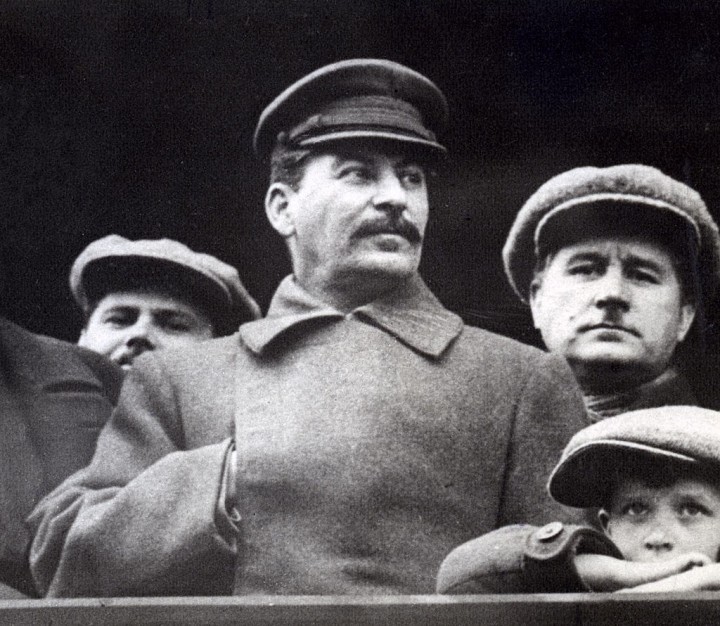
A brief look at the 1920s shows that, in the early years, there was a general questioning of the old values that had dominated Russian society under the Tsar. Family law was changed from one of male priority within the family set up, to one of equality between the sexes. Men and women were declared equal, divorce was made easily available, abortion was legalised and so on. It was in this context that homosexuality was also legalised.
It is also true to say that there were two trends present in Soviet society in the early days. There was a revolutionary trend that aimed to radically change the structure of society, but there was also an underlying conservative trend, an expression of the remnants of the old society and also the petit-bourgeois nature of the caste of bureaucrats that was beginning to emerge.
There were the attempts to build communal kitchens, communal housing, communal laundries, to provide free generalised childcare and many other changes to facilitate the life of women in particular. At the same time, however, the limited development of the economy meant that the resources for all this to become a long-lasting reality did not exist.
The isolation of the revolution to one country, and a backward one at that, meant that the leap towards a genuine communist society was not possible, and the other, more conservative trend eventually predominated. The traditional values began to creep back into society. Let us not forget that, especially within the state officialdom, it was the same old conservative petit-bourgeois layer in control. Once the complete isolation of the revolution had become evident, the hope of an international revolution saving the Soviet workers dissipated and was eventually lost in the consciousness of millions of people in the Soviet Union.
In these conditions, one observes a change even in the ability to debate different opinions. In the early years there was genuine debate within the press, with sometimes very contrasting opinions being expressed. This was also seen in art and literature. But already from the early years there was another layer, that of the mediocre non-entities, those incapable of independent thought, the sycophants and yes-men and women. This layer was only interested in being seen as the perfect party activist, always carrying out the “correct line”. This line, however, was no longer to be achieved through genuine open debate, as had been the case when Lenin and Trotsky led the Bolshevik Party. Now the line was to be learnt by rote and passed down from above.
In this atmosphere, the conservative views that permeated the bureaucracy slowly started emerging as the only accepted views. This did not take place overnight, but was a process drawn out over several years. More and more conservative views were expressed as the years went by.
This was to have a tremendous impact on the treatment of homosexuals. Already, before the actual criminalisation of homosexuality in 1934, the regime under Stalin had been making life more difficult for homosexuals.
The fate of Kuzmin
The fate of one prominent figure, Mikhail Kuzmin, a famous poet and author, highlights the process. He was openly gay and had written much before the revolution. His most famous work was his 1906 Wings, the story of a young man who discovers his own homosexuality. Kuzmin welcomed the Russian Revolution and became a member of the Presidium of the Association of Artists in Petrograd together with writers such as Alexander Blok and Vladimir Mayakovsky.
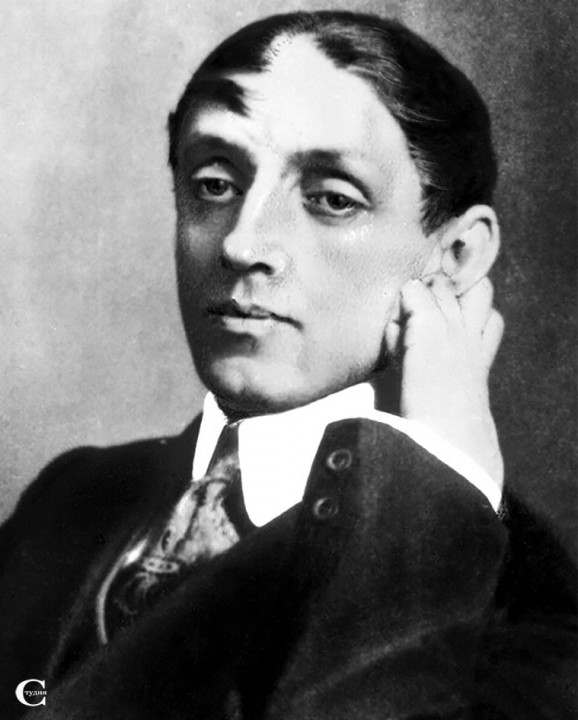
By 1928, however, he enjoyed much less freedom. That was the year of his last public reading at the Institute of the History of Art. Although permission for the event was granted, no advertising was allowed and admission was to be on invitation only. Despite these attempts to stifle the event, on the evening the auditorium was overflowing, with people standing in the aisles and sitting on the floor. Many of those attending were homosexuals.
In 1929 Kuzmin published a significant work, The Trout Breaks the Ice, a series of poems on a homosexual love affair. It was to be his last publication, after which none of his works were ever published again in the Soviet Union. But this was not the end of the victimisation of Kuzmin.

In 1931 his flat was searched by the security police. Before the police raid, his partner, Yuri Yurkun, had come under pressure from the GPU to inform on Kuzmin. In 1933 Kuzmin sold his diaries to the State Literary Museum. Its director, V. D. Bonch-Bruevich, was questioned as to why he had purchased such “uncommonly trashy” material, and then a purge of the staff at the museum was carried out. This was all before the actual re-criminalisation of homosexuality in 1934.
Kuzmin had the ‘fortune’ of dying of natural causes in 1936. His partner was not so fortunate. In 1938 he was arrested, interrogated for seven months and then executed on charges of counter-revolution.
Counter-revolution in word and deed
The 1920s saw a process of gradual bureaucratisation. It was the Left Opposition led by Leon Trotsky that fought to stop this. By the 1930s the Stalinist bureaucracy had a full grip on power and the political counter-revolution was complete. In the process, starting in the late 1920s and all through the 1930s, tens-of-thousands of genuine Bolsheviks were arrested on trumped-up charges, dragged to the gulags and made to work in the most terrible conditions until they literally dropped dead. Others were tortured to force them to confess to the most absurd crimes and then summarily shot. It was literally a one-sided civil war, with the bureaucracy having in its hands all the means to physically eliminate the defenceless oppositionists.
All of this was depicted as a struggle against bourgeois counter-revolution. But this was just a means of covering up what they were really doing. In the process of degeneration, a privileged bureaucracy had risen above the workers. While still defending the state-owned planned economy, the bureaucracy snuffed out all elements of the genuine workers’ democracy that had prevailed in the early years of the revolution.
In these conditions no critical thought was allowed. To allow such thinking would have meant a defence of workers’ democracy, something the bureaucracy could not tolerate. Had the workers had the power to elect their officials with the right of recall and to impose workers’ wages on those same officials, the bureaucracy as a privileged caste would have been endangered. The bureaucracy created an atmosphere where supposed counter-revolutionaries were to be found in every corner of Soviet society. This was also at a critical moment in the development of the Soviet Union. The negative impact of the forced collectivisation in the countryside was being felt and the bureaucracy was concerned by an actual fall in the population.
Thus, everything shifted towards promoting the bourgeois family as the basis for the production and reproduction of labour. With this came the idealisation of motherhood, up to the point where mothers with more than seven children received incentives, very much like what Mussolini and Hitler were doing in the same period. Thus abortion was banned and divorce made less accessible. As we can see, this is the final triumph of the backward traditions of old Russia embodied in the prejudices of the bureaucracy. And these prejudices reached right to the top in the person of Stalin himself.
At the same time a big purge of so-called counter-revolutionary elements was taking place throughout the country. The regime of terror was reaching its high point and an atmosphere of suspicion scapegoating was promoted everywhere.
The 1934 re-criminalisation of homosexuality
In this environment, the clampdown on homosexuals began. As we have seen in the case of Kuzmin, this occurred well before the actual, formal criminalisation of homosexuality. But by 1933 the process had picked up momentum. That year in late summer, for example, 130 men were arrested in Moscow and Leningrad during police raids against homosexuals. Such arrests continued into 1934. As there was as yet no law banning homosexuality, those arrested were accused of other crimes, usually “counter-revolutionary” activity. One witness stated that the gatherings of homosexuals were “made…to appear as counterrevolutionary, Trotskyite, or even Hitlerite.”
The actual initiative for re-criminalising homosexuality came from the deputy chief of the OGPU, the secret police, G. G. Iagoda in September 1933, when he wrote a letter to Stalin insisting that a law against homosexuals was necessary from the point of view of state security. He presented homosexuals as belonging to a network of counter-revolutionary spies. Stalin was only too keen to act on Iagoda’s request, passing it onto Kaganovich, a member of the Politburo with an added note that, “these scoundrels must receive exemplary punishment, and a corresponding guiding decree must be introduced in our legislation.”
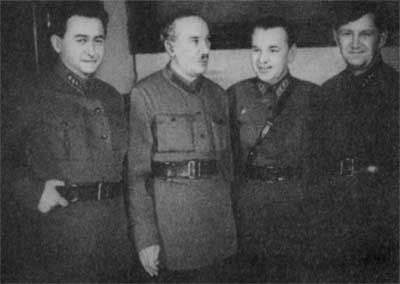
The note in the archives bears notes of acknowledgement, “Correct! L. Kaganovich”, and “Of course. It is necessary. Molotov.” Lazar Kaganovich and Molotov, belonging to the type of mediocre elements now at the top of the party, would have had no qualms in simply obeying Stalin. Had they had such qualms, they would have ended up facing a firing squad at some point. Instead, unlike many old Bolsheviks, they had the luxury of dying of old age!
Iagoda then proceeded to draft a text for the law on 13 December of 1933. Just a few days later, on 16 December, the Politburo approved the draft. The very next day the All-Union Central Executive Committee of the USSR adopted the same draft, to be applied by all the component republics of the Union. On 7 March 1934 the draft became law in the USSR, followed on 1 April in the Russian Soviet Federative Socialist Republic (RSFSR). In the process several changes were made to the original draft. Henceforth, men caught in homosexual acts could be arrested and sentenced to between three and five years in prison. In the subsequent years, thousands of homosexuals ended up in Stalin’s prisons and labour camps.
The case of Harry Whyte, a British Communist
Before the 1934 criminalisation in the Soviet Union, the Communist parties in Europe had been campaigning for homosexual emancipation, especially in Germany where there was a strong and organised gay rights movement – which was to be subsequently brutally clamped down on by Hitler, with many homosexuals ending up in the concentration camps. It is an irony of history that the Stalinist regime denounced homosexuality as a bourgeois depravity, quoting Germany and the Nazis as examples, precisely when Hitler was moving in exactly the same direction as Stalin on this question!
An example of the difficulties Stalin had in overcoming concern among European Communist Party members at this reactionary turn in the Soviet Union is provided by the experience of a member of the Communist Party of Great Britain who was working in Moscow at the Moscow Daily News. When he got news of the new law, he wrote a letter to Stalin asking him how he could justify it. (See his letter here: Can a homosexual be a communist?) In the letter, Harry Whyte, who was a gay man living with a Russian gay partner, recounted his efforts to find his partner who had just been arrested by the secret police during raids against homosexuals. In his letter, Whyte pointed out how the new law was cancelling all the progress that had been made in such matters after the revolution. Harry Whyte, reflecting the thinking of a loyal party member, believed that only homosexuals involved in genuine counter-revolutionary activities would be prosecuted, but was very quickly to discover that the law applied to all homosexuals.
Stalin had Whyte’s letter archived, but first added his own note, “An idiot and a degenerate”, a clear reference to the author of the letter. Although he had the letter archived, such protests from gay Communists alerted Stalin to the need for a propaganda campaign to sway public opinion. Here he called on the help of someone who was more able than himself as a writer, Maksim Gorky, who hurriedly wrote an article, ‘Proletarian Humanism’, published in both Pravda and Izvestia in May 1934. The article was a rabidly homophobic text which positioned homosexuality as a western bourgeois disease, even an expression of the “demoralising influence of Fascism.” And the slogan he raised was, “Destroy the homosexuals – Fascism will disappear.”
Krylenko makes clear that all homosexuals are criminals
In spite of all this, getting the law applied as firmly as Iagoda had wished for proved difficult. Both in the medical world and the judiciary, 15 years of legalised homosexuality had left their mark. Doctors, psychiatrists and judges had become accustomed to homosexuality being legal. Some even refused to believe that such a law could have been passed. Among this layer there was, therefore, an initial tendency to be lenient on homosexuals.
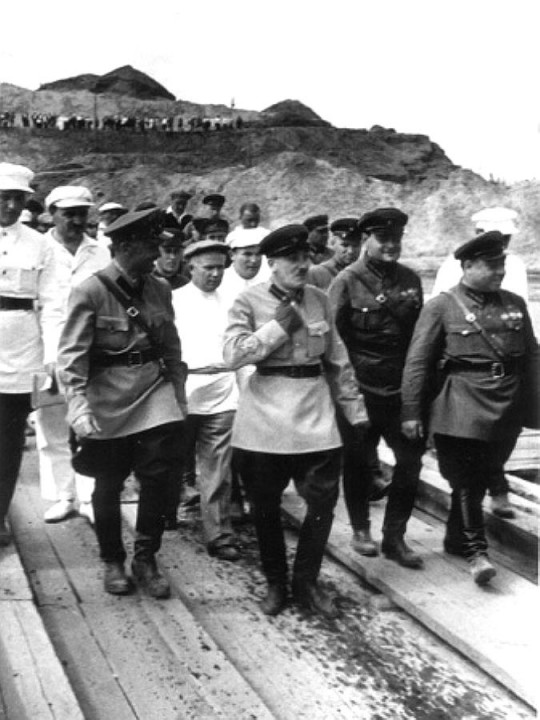
Krylenko, People’s Commissar of Justice, in 1936, felt the need to explain the real nature of the new law. At a meeting of the Central Executive Committee he explained that homosexuals were class enemies and criminals. In reference to the decriminalisation of homosexuality after the revolution, he explained that legislation had been influenced by thinking in the West which viewed homosexuality as an illness and not a crime.
It is worth quoting a section of his speech, which gives a taste of the bureaucracy’s rampant homophobia:
“In our environment, in the environment of the workers taking the point of view of normal relations between the sexes, who are building their society on healthy principles, we don’t need little gentlemen of this type. Who then for the most part are our customers in these affairs? Workers? No! Declassed rabble. [Mirthful animation in the hall, laughter] Declassed rabble, either from the dregs of society or from the remnants of the exploiting classes. [Applause] They don’t know which way to turn. [Laughter] So they turn to… pederasty.” [Laughter]” (Quoted in Homosexual Desire in Revolutionary Russia, by Dan Healey)
With his speech, Krylenko made it crystal clear that all homosexuals were to be treated as criminals. In the period of the purges and show trials the repression of homosexuals was severe and was often used to hit dissidents. Once the task of rooting out all potential dissent had been carried out, with imprisonment, labour camps, torture, confessions and executions, the law continued to be acted on, but it seems with less vehemence.
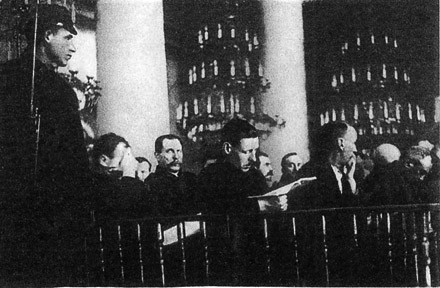
Stalin would discover, however, that homosexuality cannot be decreed out of existence. The subsequent trials of homosexuals revealed that a gay subculture continued to exist, with known meeting places frequented by gay men. In the same trials, despite the prejudices of the bureaucrats charged with pursuing the law against homosexuality, it emerged that sex between men could be accompanied by genuine emotions of love and care. Incapable of understanding this as a natural human trait, it was explained away as due to some kind of defect in the men that produced a ‘female’ and a ‘male’ type.
“De-Stalinisation” and the plight of homosexuals
The repression of homosexuals continued right up to the death of Stalin and beyond. Thousands of homosexuals ended up in Stalin’s prisons and gulags. When he died, they were among the more than two million people condemned to forced labour. After Stalin’s death, the regime moved to reduce the population of the gulags with an amnesty for many of those held there. But the homosexuals were not included because they were considered common criminals.
In fact, while the regime moved away from some of the worst aspects of the Stalinist terror, in the case of same-sex relations repression actually increased. Paradoxically, the forced enclosure of large numbers of men – and women in separate camps – in the prisons and labour camps actually increased the numbers involved in same-sex love. It seems that one of the things the regime feared upon releasing many of the gulag inmates was that these could “infect” wider society with the “corrupting” influence of homosexuality!
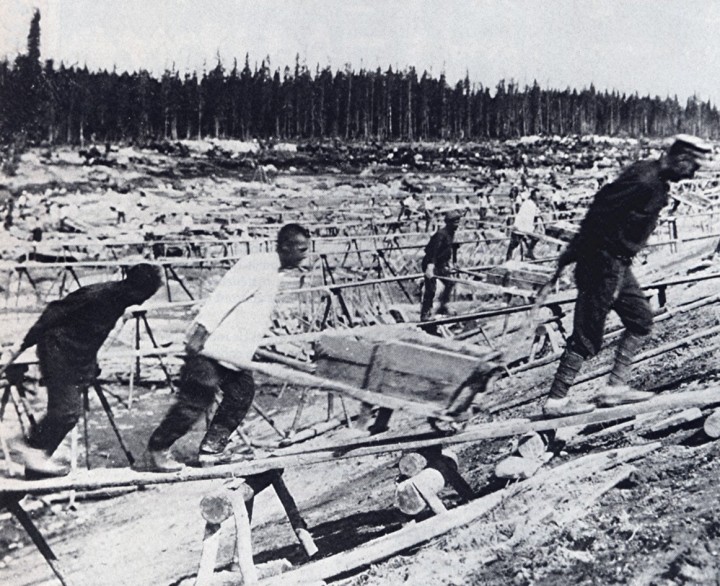
The fate of lesbians was no better. If anything, things worsened for them. Many ended up being treated like political dissidents, declared mentally ill and sent to ‘psychiatric’ hospitals for ‘treatment’, which meant being forced to take medication.
Homosexuality would only finally be decriminalised in April 1993 and in 1996 this was confirmed in the drafting of a new criminal code. This was done in the context of the new regime wishing to break with much of the old Stalinist set up, as the bureaucracy moved towards capitalism, and away from the planned economy. Nonetheless, although same-sex relations were formally legalised, in practice life is not easy for gays in contemporary Russia. And there is still a widespread idea that homosexuality is alien to Russian society. Gays and lesbians have still to achieve the same level of freedom as achieved under the Bolsheviks after the October Revolution. As such the legacy of Stalinism is s clear contributing factor to the appalling treatment LGBT Russians face today.
How many gay people suffered the humiliation of trial and imprisonment during the long 59-year period in which Soviet law criminalised homosexuality? It is difficult to calculate, with some claiming that up to 250,000 gay men were convicted, although more recent calculations seem to indicate that the real figure was about 60,000. From the 1960s through to the 1970s there was actually an increase in the number of men prosecuted for homosexual activities, the peak being reached in 1977-78 when over 1,300 were convicted in each of those years.
The other Stalinist countries
Prior to 1933-34, Communist Parties in different countries – as we have seen – had a position of calling for the emancipation of homosexuals. The German Communist Party, the biggest outside the Soviet Union at that time, had such a position. This was to radically change once homosexuality had been re-criminalised in the Soviet Union.
This should not surprise us, as the Communist International and its national sections were no longer that vibrant, living, revolutionary force of the first four world congresses. If one reads the speeches, resolutions and statements of those congresses one will find genuine debate with different opinions expressed by delegates from the various national sections. One will see that the method of Lenin and Trotsky was to debate and convince those delegates that had contrasting views.
With the rise of the bureaucracy in the Soviet Union this all changed. Stalin’s method was that of manoeuvres in the corridors and behind people’s backs. His speciality was calumny and slander. He was far better at organising witch-hunts than debating political ideas. Stalin’s rise was also the rise of the petty bureaucrat with petty conservative views.
In this environment homophobia spread throughout the Comintern, and later, when regimes modelled on the bureaucratised Soviet Union were put in place in Eastern Europe, a similar hostile environment towards homosexuals was created. Homosexuality in most of the official Communist parties became seen as a degenerate behaviour emanating from bourgeois society. This had an enormously negative impact on the struggle against LGBT oppressions and served to sever the LGBT movement from Marxism and socialism for decades.
Poland was the only exception, where the old 1932 Penal Code had decriminalised consensual same-sex acts, and that law was carried over into the Stalinist regime after the Second World War. However, in all the other Eastern bloc regimes homosexuality was treated as a criminal offence. Only years later did some of those regimes begin liberalising on the question. The decriminalisation of same-sex acts in Czechoslovakia and Hungary took place in 1962, in Bulgaria and East Germany in 1968, with the exception of Romania, which only decriminalised in 1996, several years after the fall of the Stalinist regimes. In Romania anti-gay legislation was particularly severe, with prison sentences that could be as high as 10 years.
In Yugoslavia, which was not a satellite of the Soviet Union, each republic that made up the federation had autonomy in such legislation. Thus Croatia, Montenegro and Slovenia decriminalised in 1977, while the other republics did so only after the collapse of the Yugoslav federal republic. Albania, an extremely autarchic regime, decriminalised in 1977, although complete decriminalisation did not take place until 1995, a few years after the collapse of the Stalinist regime of Hoxha.
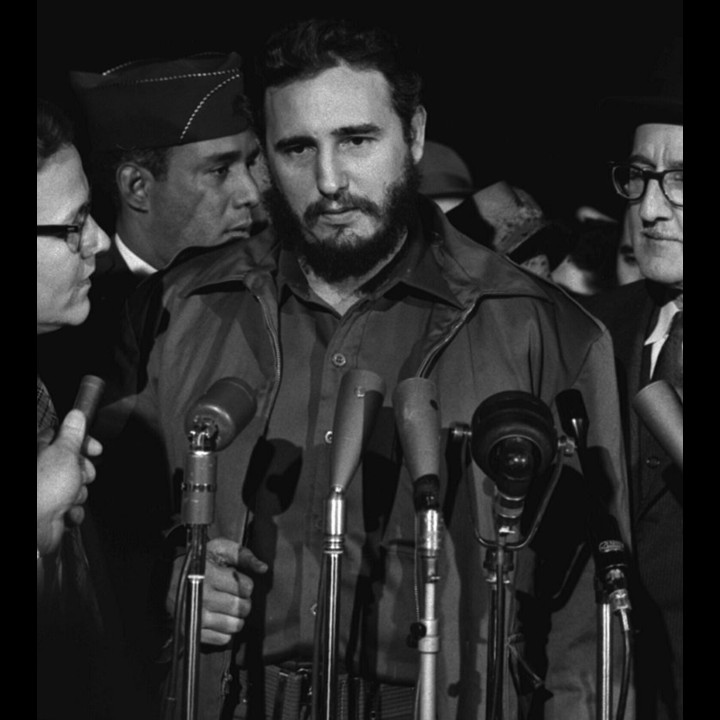
In Cuba also, after the coming to power of Castro and also under the influence of the Soviet Union, homosexuality was criminalised. In the immediate aftermath of the Cuban Revolution, many prominent artists and intellectuals of a gay orientation were sympathetic to the new regime, seeing in it the prospect of social justice, including a liberalisation of attitudes towards homosexuality. But within a couple of years all this changed and there was a general clampdown on same-sex acts, with many homosexuals ending up imprisoned. It was only in the mid-1970s that a more tolerant approach began to emerge and in 1979 same-sex acts were legalised.
What happened under the Maoist regime is of particular interest because China historically had had a tradition of accepted homosexuality going back to the very early period of its ancient civilisation. No one could claim that homosexuality had no place in Chinese society. It was only in more recent history that this had changed. And after the 1949 revolution, the same homophobic environment prevalent in the Soviet Union was also promoted in China. Maoist China adopted the same approach as the Soviet Union under Stalin, arresting gays and imprisoning them. During the Cultural Revolution in the 1960s, homosexuals were publicly humiliated and sentenced to long terms in prison. This remained the case throughout the Maoist period and homosexuality was only finally decriminalised in 1997, more than twenty years after Mao’s death. And it wasn’t until 2001, that homosexuality was no longer officially classed as mental disorder. Even then, official attitudes towards same-sex activity were that it was an ‘abnormality’.
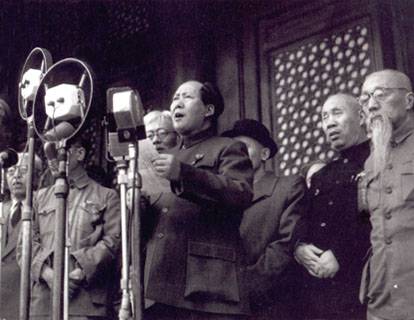
Vietnam is very different, where there is no record of homosexuality ever having been criminalised. That does not mean that official attitudes were friendly to gay people. It was often presented as a social evil and at one point there were calls for a law banning same-sex activities, but nothing came of it.
Today’s Stalinists and Maoists must give an answer
As we can see, most of the Stalinist regimes after the Second World War criminalised homosexuality or carried over previous anti-gay legislation into their criminal codes. And most of them, gradually, from the 1960s through to the 1980s, decriminalised homosexuality. In this there were parallels with what was going on in the west. So one could argue they were no worse than what we had in Britain or the United States. But this would be missing one very important point.
In 1922, at the time of Lenin and Trotsky, when the Soviet Union was still a relatively healthy workers’ state and the process of bureaucratic degeneration was only in its very early stages, under Bolshevik power, homosexuality was decriminalised. This placed the USSR in the vanguard internationally, far ahead of most of the more economically advanced countries in the West. And as we have seen, for almost 15 years same-sex relations were free from legal interference. Gay men and women could not be arrested and imprisoned.
Today there are still adherents to the Stalinist tradition. The openly hard-line Stalinists still refer to the regime under Stalin as a model. The Maoists – who claim Stalin as theirs and only condemn the Soviet Union after his death – look to the regime under Mao as their model. They still refer to such theories as the “Protracted People’s War”, historically modelled on Mao’s Long March, and try and apply this to modern, urbanised conditions. This leads to much confusion as to what it actually is. Where in the past it has been applied in practice in highly urbanised areas, such as in Latin America, it has ended up as urban guerrilla warfare totally isolated from the organised working class, and playing a counter-productive role.
The same Maoists talk of the future regime they envisage as being one where there is “freedom of dissent and unity in action”, and they claim this comes from Mao! It is totally outside of historical reality to claim that there was freedom to dissent, either under Stalin or under Mao. They also talk of a future “vanguard party” in power whose elected representatives would be recallable by the people. Again, where and when was such a basic democratic right applied in Stalinist Russia or Maoist China? All of this is apologia for what was a monstrous bureaucratic regime. It denies historical reality.
This doesn’t stop some of these Stalinists, in particular latter-day Maoists, from adhering to identity politics, to promote the theory of intersectionality and so on. In doing so, they are very dishonest with their own past. Under Stalin and Mao if you were a gay person – not to mention transgender – you would suffer terrible treatment, humiliation and imprisonment.
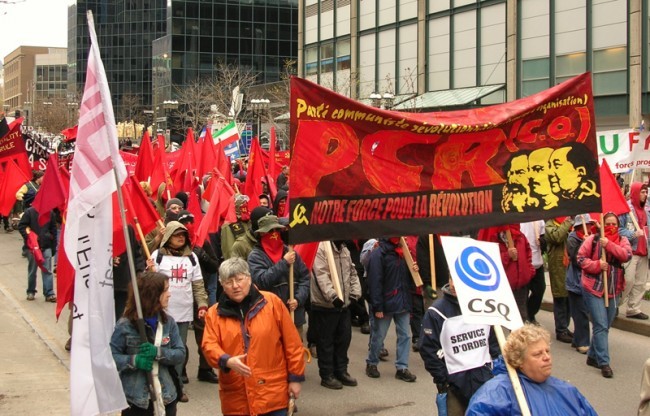
Other former Stalinists have abandoned any pretence of being Marxist or Communist and have moved over to the camp of bourgeois liberalism, and in so doing have embraced ideas which serve to divide the oppressed, rather than unite them. It is ironic that these people, who in the past would have been apologists of the totalitarian Stalinist regimes, now dress themselves up in the stinking clothes of bourgeois liberalism and prefer that no mention be made of their own past traditions.
Those that still define themselves as Stalinists or Maoists, but who today campaign on LGBT issues, have to explain why they adhere to ideas that emanated from a privileged bureaucratic caste that destroyed the many rights won by the workers and peasants in 1917. They have to explain why this bureaucracy, which they idealise as true communists, overturned the 1922 law that decriminalised homosexuality. What role did that play in ‘building communism’?
The reason they cannot give an explanation is because they do not recognise the fact that there was a bureaucracy which had usurped political power and had broken with much of what the Bolsheviks had fought for. They cannot accept that what came with this was a return to many of the prejudices of the old Tsarist class society. In the process basic, elementary rights, such as the right to an abortion for women, were lost. And in the process gay people were once again demoted to the level of common criminals.
We, the Marxists, on the other hand, have every interest in setting straight the historical record. And part of this is establishing the truth of what the October revolution achieved in terms of homosexual emancipation and also how that was destroyed in the process of Stalinist degeneration.
—
Note: Below are the main books and articles I read and consulted to establish the facts outlined in this article. They all make for interesting reading, but all of them have their own interpretations of what happened. The common weakness in all of them is a lack of understanding of the process of bureaucratisation which transformed the original Bolshevik regime, based on workers’ power, into a regime which destroyed workers’ power. The term “Bolshevik” is often used to describe the party and the government of the early 1920s as well as the later Stalinist totalitarian bureaucratic regime.
Books:
Homosexual Desire in Revolutionary Russia, by Dan Healey, University of Chicago Press, 2001
Sexual Revolution in Bolshevik Russia, by Gregory Carleton, University of Pittsburgh Press, 2005
Gay Men and the Sexual History of the Political Left, edited by Gert Hekma, Harry Oosterhuis and James Steakley, Harrington Park Press, 1995
Articles:
Can a homosexual be a communist? Harry Whyte’s letter to Stalin, 1934
Was Homosexuality Illegal in Communist Europe? By Lukasz Szulc, 24 October 2017
China: Information on treatment of homosexuals, published by United States Bureau of Citizenship and Immigration Services, 1 March 2001
A History Of Homosexuality In China by Hayden Blain, Updated: 2 November 2016
Mikhail Kuzmin’s short novel, Wings, is also available in English, published by Hesperus Press Limited in 2007
